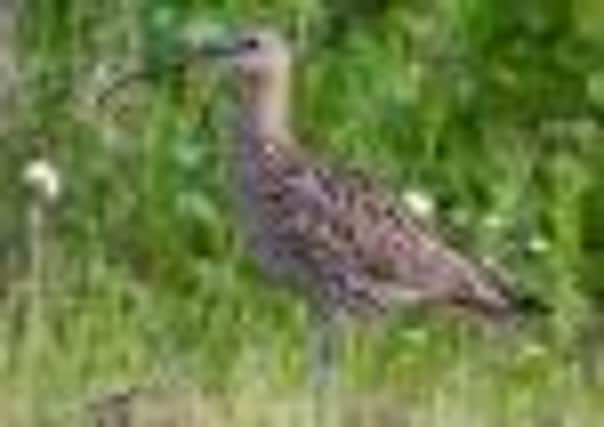Climate change in Scotland ‘to kill the curlew’


The curlew is easy to identify due to its long curved bill and distinctive trill-like call. It is the largest of Scotland’s wading birds and commonly found in the southern uplands and east Highlands around moors and estuaries.
However, if predictions of a 4C increase in global temperature by 2080 come true, the British Trust for Ornithology has calculated the species could decline in number in the UK by two-thirds.
Advertisement
Hide AdAdvertisement
Hide AdThey have also calculated the likely impact on the meadow pipit, a small songbird common in upland areas.
It would drop in numbers by more than a third according to the BTO’s study. In contrast, two species most common in more southerly parts of the UK, although still seen in Scotland, would see numbers rocket.
The green woodpecker, the largest of Britain’s woodpeckers, would see its population rise by more than 1,000 per cent from the 24,200 breeding pairs in the UK today.
And the nuthatch, a bird that looks like a small woodpecker and is mainly seen in the south with just occasional sightings in Scotland, would see its numbers soar by 190 per cent by 2080.
James Pearce-Higgins, head of population ecology and modelling research for the BTO, said: “Climate change is already affecting our birdlife.
“If future projections of climate change are realised, then the observed trends we have seen – of southerly distributed species tending to increase in abundance and northerly distributed species tending to decline – are likely to continue and become increasingly apparent.
“While for many of us this may mean we see some exciting new bird species in the countryside around us, for others it may mean the tragic loss of some of our iconic northern species.”
He added that, so far, the predictions were showing signs of coming true.
Advertisement
Hide AdAdvertisement
Hide Ad“At a European level, species which models suggest should decline in response to climate change have indeed tended to decline, while those predicted to benefit from climate change have tended to increase in abundance. These changes also seem to be occurring in the UK.”
As well as predicting changes in species of birds in the UK, the BTO is interested in measuring the impact on the abundance of each species and how this might be affected by climate change.
The green woodpecker and nuthatch, meadow pipit and curlew, were the first examples they looked at. The organisation now plans to extend the work to cover a wider range of species.
The research shows that under a “high emissions scenario”, where global temperatures rise by 4C by 2080, the curlew could drop in numbers by 66 per cent. By 2050, under this scenario, it would decline by 35 per cent.
And the meadow pipit would see its numbers fall by more than a third by 2080 and by 19 per cent by 2050.